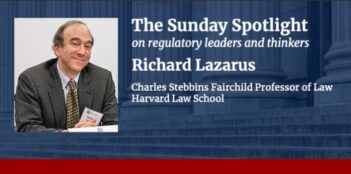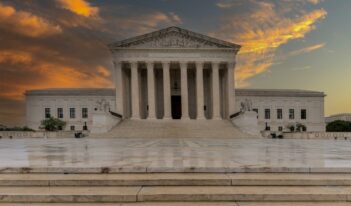
EPA’s consideration of costs in regulating toxic air pollutants should prove sufficient.
Should costs be considered in regulation? If so, when? The U.S. Environmental Protection Agency’s (EPA) regulation of mercury, arsenic, and other toxic pollutants from power plants, which could save thousands of lives and lead to $37-90 billion in benefits to the public, is being challenged in the U.S. Supreme Court on these deceptively simple issues.
Environmental regulations have costs. The rules currently being challenged in Michigan v. EPA could increase the cost of producing electricity, potentially leading to higher utility rates. But the release of toxic air pollutants also has real – and in this case significantly higher – costs to public health and well-being.
It is clear that the EPA considered costs to industry when setting the stringency of the standards for reducing the release of mercury and other toxic pollutants from power plants. The question is whether EPA was also required to consider costs at an earlier step in the process, when deciding whether it was “appropriate and necessary” to list power plants as a regulated source category.
When the Clean Air Act was amended in 1990, Congress included a provision that asked the EPA to study whether it was “appropriate and necessary” to regulate hazardous air pollution from power plants. Congress required this separate study because it was possible that the new interstate acid rain provisions and other changes to the Clean Air Act might suffice to control mercury emissions. Those measures turned out not to provide adequate protection, and the EPA subsequently found that regulation was, in fact, needed. The agency made this initial “listing” decision without considering the cost of regulation because cost would be considered later when setting the standards’ stringency. That decision is where the petitioners, a coalition of coal industry interests, have argued to the Supreme Court that the EPA went wrong.
The EPA’s choice not to consider costs at the listing phase is on strong legal footing and should prevail for three reasons. First, the Supreme Court consistently affords agencies discretion whether to consider costs when the statutory text is silent or ambiguous. This discretion is especially strong because the EPA’s interpretation of the law has been consistent over such a long period of time. Since 1992, under administrations of both parties, the EPA has consistently interpreted the relevant provisions of the Clean Air Act as not requiring cost consideration during initial “listing” decisions.
Second, Congress explicitly balanced cost considerations against air quality goals when it prescribed the criteria for setting regulatory stringency under Section 112(d) of the Clean Air Act. The EPA has two main options for determining the stringency of regulatory standards: consider costs, or set the standard by reference to the best performance that sources could achieve while remaining financially viable. Although the latter option does not say “cost” explicitly, it functionally requires the EPA to consider the costs of implementation.
Lastly, the EPA cannot meaningfully predict potential costs before making some fundamental regulatory choices. Costs may decrease or increase significantly as the EPA chooses a regulation’s scope, stringency, timing, and flexibility. For instance, the statute allows the EPA to create subcategories of power plants based, for example, on differing operating conditions, and then to regulate each subcategory differently. This determination would have a major effect on the cost of regulation but can only be made after the initial listing decision. Calculating costs before this step would be premature and misleading.
Should costs be considered when designing and implementing environmental regulations? Absolutely – the EPA has not disputed this point. But both common sense and statutory interpretation show that it would be improper to compel the EPA to consider costs at the initial listing phase.
The Supreme Court’s decision in this case could have lasting impacts on public health, and the adequately cost-justified regulation should not be overturned because EPA took costs into account at the only point at which it was possible to do so.
This essay is part of a three-part series, High Court Hears Debate Over Costs and Benefits of Regulating Air Pollution.
Daniel Cheung is a law student at NYU School of Law. He contributed research for the Institute for Policy Integrity’s amicus brief in Michigan v. EPA.



